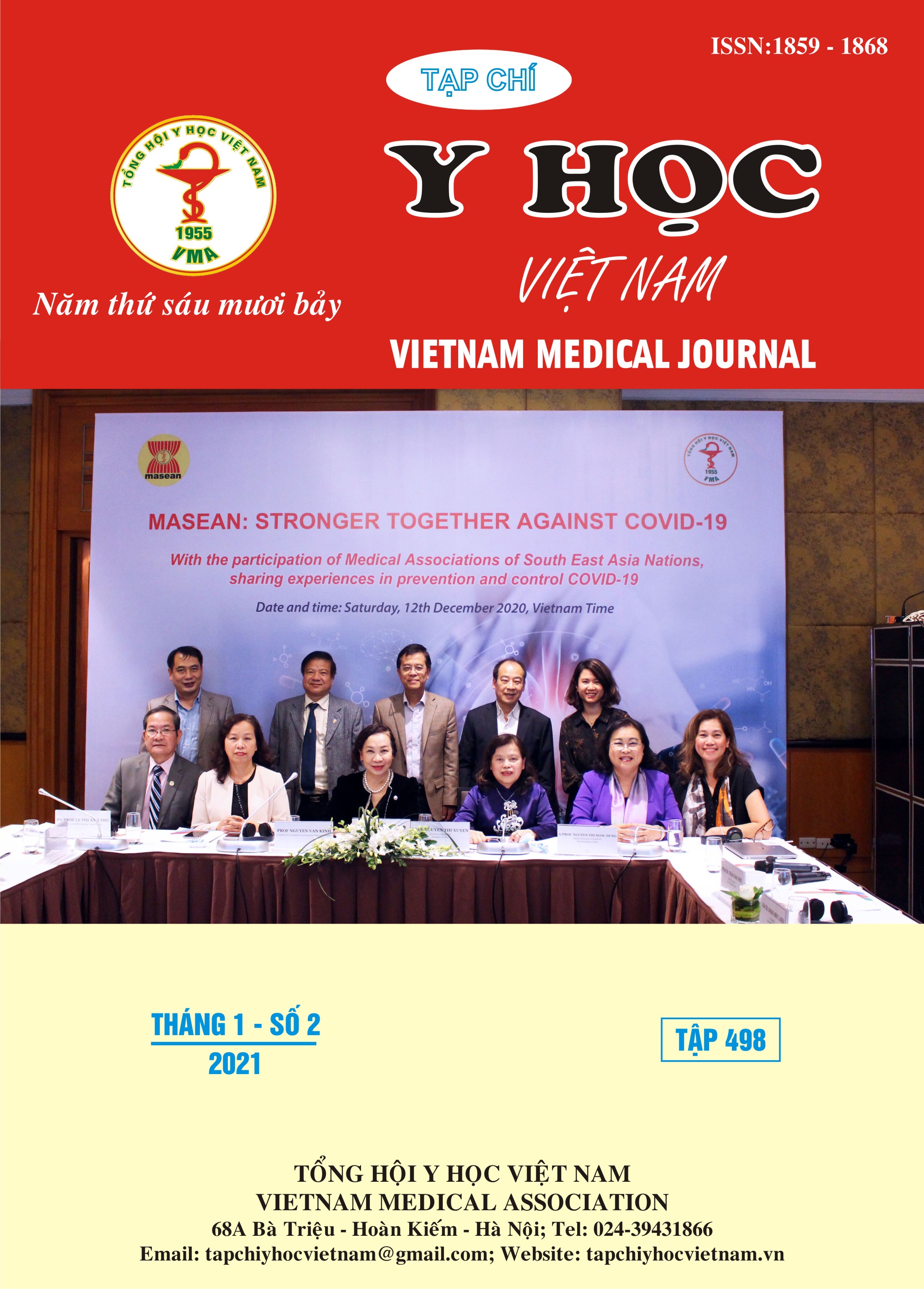PHẪU THUẬT NỘI SOI MỘT ĐƯỜNG RẠCH ĐIỀU TRỊ DỊ TẬT RUỘT QUAY BẤT THƯỜNG Ở TRẺ SƠ SINH
Nội dung chính của bài viết
Tóm tắt
Mục tiêu: Mô tả kỹ thuật phẫu thuật nội soi một đường rạch (PTNSMĐR) điều trị dị tật ruột quay bất thường (DTRQBT) ở trẻ sơ sinh. Phương pháp nghiên cứu: Báo cáo 1 ca bệnh và tổng quan y văn. Kết quả: Bệnh nhân là trẻ nam 8 ngày tuổi, cân nặng 3,3kg, nhập viện do nôn dịch vàng và vàng da tăng bilirubin tự do. Dựa trên bệnh cảnh lâm sàng và chẩn đoán hình ảnh, bệnh nhân được chẩn đoán DTRQBT - xoắn trung tràng (không có hoại tử ruột) và được chỉ định điều trị phẫu thuật. Chúng tôi rạch da đường vòng cung dưới rốn, đặt 1 trocar 5.5mm và 2 trocar 3.5mm trong phạm vi 1 vết rạch này. Dùng optic 300 và dụng cụ nội soi thẳng thông thường. Trong mổ phát hiện xoắn trung tràng 360 độ, ruột hồng không bị giảm tưới máu. Tiến hành thực hiện phẫu thuật Ladd: tháo xoắn, cắt dây chằng Ladd, tải rộng mạc treo, xếp lại ruột non sang phải, đại tràng sang bên trái và cắt ruột thừa. Không có mất máu đáng kể, không có tai biến trong mổ. Thời gian mổ là 90 phút. Trẻ phục hổi lưu thông tiêu hóa tốt và được cho ăn đường miệng từ ngày 3 sau mổ. Tuy nhiên BN bị viêm phế quản phổi phải điều trị kháng sinh và ra viện ngày 9 sau mổ. Theo dõi 9 tháng sau mổ, BN không còn triệu chứng. Thẩm mỹ sau mổ là rất tốt, BN coi như không nhìn thấy sẹo mổ. Kết luận: Kỹ thuật của chúng tôi PTNSMĐR điều trị DTRQBT ở trẻ sơ sịnh là có tính khả thi, an toàn và có kết quả thẩm mỹ cao.
Chi tiết bài viết
Từ khóa
Phẫu thuật nội soi một đường rạch, ruột quay bất thường, trẻ sơ sinh
Tài liệu tham khảo
2. Dassinger MS, Smith SD. Disorder of intestinal rotation and fixation. In: Coran AG, Caldamone A, Adzick NS, Krummel TM, Laberge JM, Shamberger R (2012). Pediatric Surgery. 7th ed. Mosby;. pp.1111-11125.
3. Ferrero L, Ahmed YB, Philippe P, Reinberg O, Lacreuse I, Schneider A, Moog R, Gomes-Ferreira C, Becmeur F (2017). Intestinal Malrotation and Volvulus in Neonates: Laparoscopy Versus Open Laparotomy. J Laparoendosc Adv Surg Tech A.;27(3):pp.318-321.
4. Hsiao M, Langer JC (2012). Surgery for suspected rotation abnormality: selection of open vs laparoscopic surgery using a rational approach. J Pediatr Surg.: 47(5):pp.904–910.
5. Miyano G, Fukuzawa H, Morita K, Kaneshiro M, Miyake H, Nouso H, Yamoto M, Fukumoto K, Urushihara N (2015). Laparoscopic repair of malrotation: what are the indications in neonates and children? J Laparoendosc Adv Surg Tech A.;25(2):pp.155-8.
6. Son TN, Liem NT, Hoan VX (2014). Transumbilical laparoendoscopic single-site surgery with conventional instruments for choledochal cyst in children: early results of 86 cases. J Laparoendosc Adv Surg Tech A.;24(12)pp.:907-10.
7. van der Zee 1, Bax NM (1995). Laparoscopic repair of acute volvulus in a neonate with malrotation. Surg Endosc.;9(10):pp.1123-4.
8. Vassaur J, Vassaur H, Buckley FP. (2014). Single-incision laparoscopic Ladd's procedure for intestinal malrotation. JSLS;18(1):pp.132-5.


